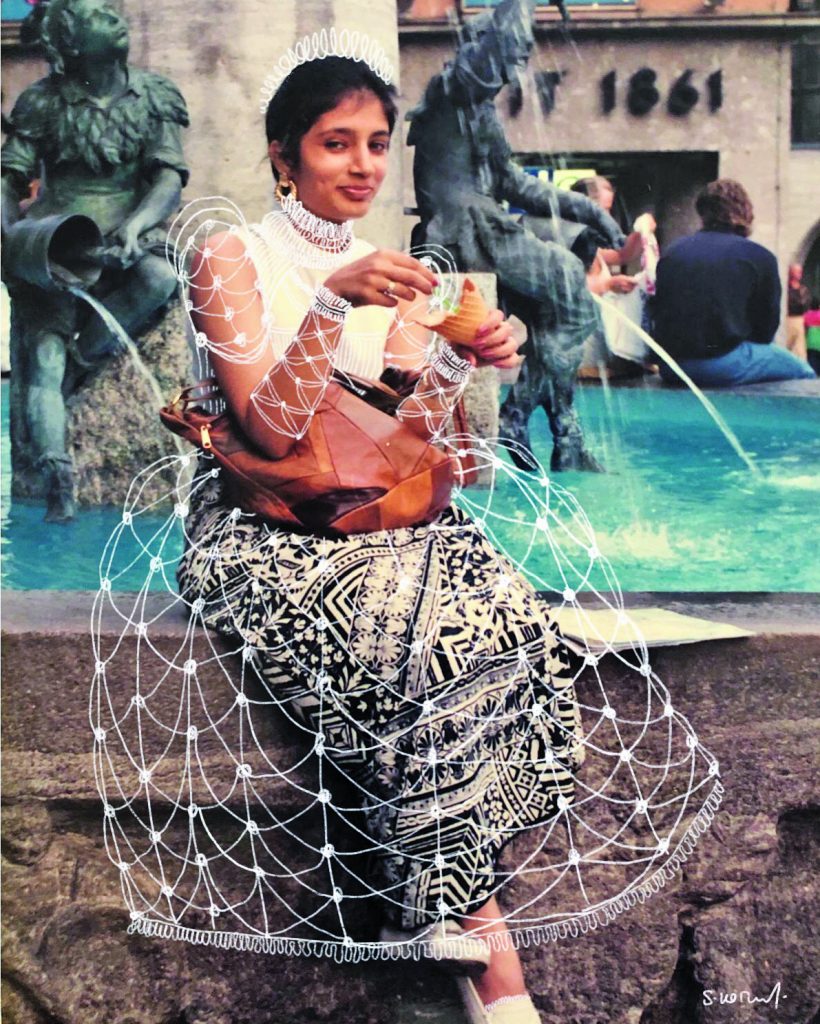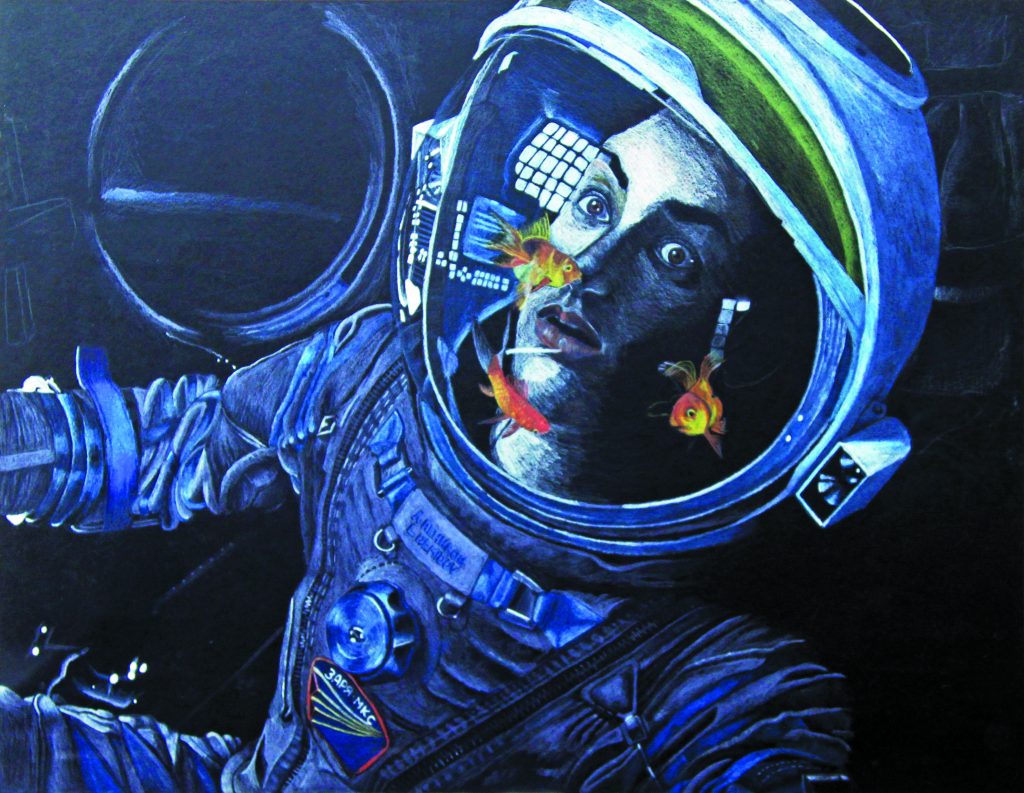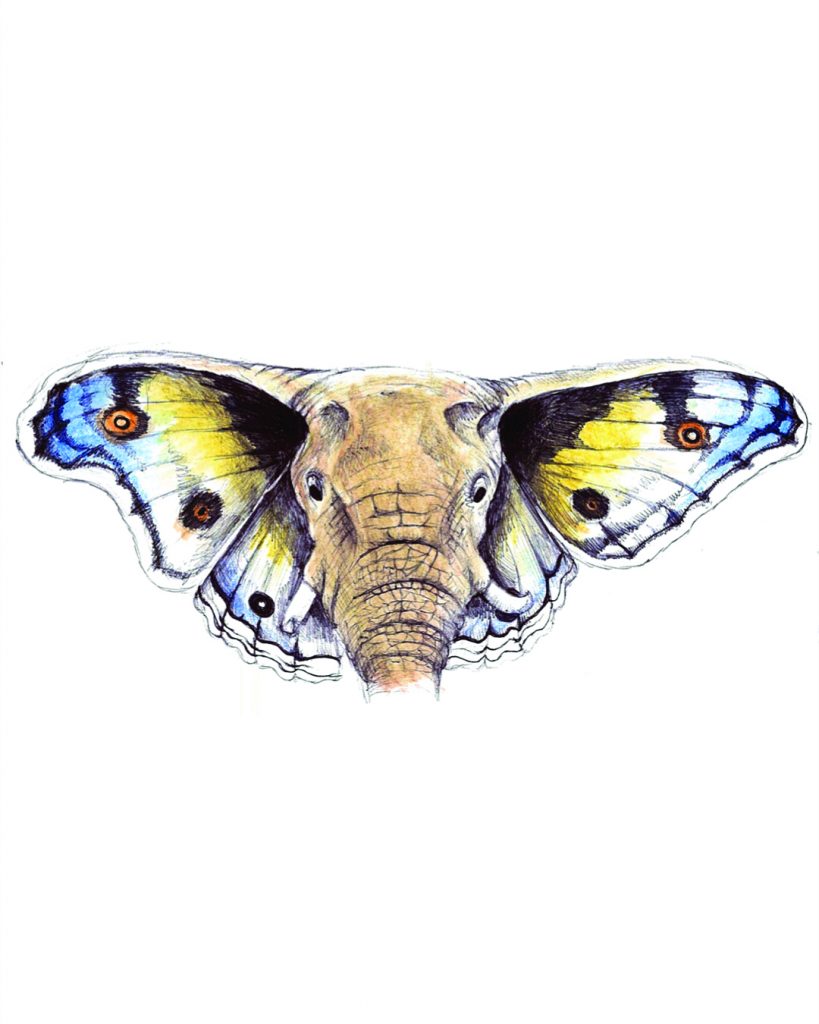Artist Saloni Kothari creates cutting-edge discourse with art that’s both evocative and surprising.
By Aiden Jewelle Gonzales
When people think of art, it often evokes a sense of whimsy or abstract philosophy. However, 20-year-old Saloni Kothari has decided to paint with a different brush – often literally – and is using her art to inform and question, and to create tangible change in the community. Ethnically Indian, legally Thai, British-educated, and the third child in a close- knit family of six, Saloni embraces no one label and this freedom informs her art, where she often deliberately colours outside the lines.
Currently an undergraduate at the University of California, Los Angeles (UCLA), she’s majoring in International Development, Genetics and Bioethics, and working at a neuroscience lab as a Data Visualisation Specialist. The juxtaposition of art and STEM is clearly seen in her work, which she considers an extension of the cutting-edge conversations in science and politics that she finds so inspiring.
What sparked your interest in the arts?
Like any Asian, Kumon-advocating parent, my mother put 5-year-old me through recreational classes in the hopes that I would become a multitalented child prodigy. After learning that I’d been bribing my piano teacher with chocolate for play time, and faking sprained ankles before ballet class,she realised that I wasn’t becoming famous musician or dancer. However, she noticed my excuses coincided with the episodes of Art Attack on Cartoon Network, and that I was constantly constructing whacky art pieces. She decided to call a teacher, Mr. Oleg, who taught me the traditional fundamentals of visual art during my formative years.
I then furthered my understanding of art by working as a tour guide at the Hammer Museum, where I learnt a wealth of art history. There, I interacted with a diverse range of visitors, from early onset Alzheimer’s patients to K-12 students. I also planned and taught art lessons to novice monks at Wat Pong Ploy, a Buddhist monastery.
What is the driving philosophy behind your pieces?
Weirdness is good, honest, and valuable. For me, technical precision is the least interesting aspect of the art-making process. I don’t paint for the sake of it being aesthetically pleasing or decorative – it needs to challenge a belief, and have an element of surprise or satire, because that allows viewers to interact with it. I wouldn’t know how to unpack a photo realistic painting of a fruit platter. It’s a freaking fruit platter!
How would you describe your creations?
I’d say they’re whimsical, honest, trippy, and bold. Even though I make art to consolidate my own chaotic opinions, it ends up being relatable to other viewers because everyone has inexplicable thoughts. I usually explore something I’m curious about, angry about, or amused by.
Which media do you use most often?
I like mixing media because I can create exactly what I want when I’m not limited to one medium. For example,I painted insects with acrylic paint on the back of leather- bound books but I broke the “painting rules” by going over the precise parts with a fine Sharpie instead of a thin paintbrush. I don’t care that the latter shows a higher level of technical aptitude, if I can yield the same results with a Sharpie, I am going to use a Sharpie.
What have your favourite creations been to date?
One has to be Spacing Out (2017, colour pencil) because it represents those fleeting, bizarre thoughts that we rarely talk about, but make up such a large part of the human experience. The second would probably be Boss Lady (2019, photograph and digital drawing) because it’s an unorthodox depiction of the way I see truly my mom: regal, level-headed, and fashionable.
What are some of the recent platforms that you have been featured on?
I’ve been fortunate enough to be featured in FEM Magazine, The Daily Bruin and Study Breaks. I’m also the ambassador of the Bruin Visual Arts Club, so I’m responsible for bringing external opportunities to visual artists on campus, such as our collaboration to paint and distribute clothing donation bins around Westwood and in the University of California’s Police Department. I was also invited to display my work at the Mental Health Exhibition at UCLA last year, in which I submitted Indecision (2018), a piece exploring anxiety. In the same year, I had three other pieces featured at Spring Sing and at the Kerchoff Gallery Space.
Aside from your personal projects, what do people most frequently commission?
I’ve done a range of projects, from music album covers to interpretative portraits for milestone birthdays, and posters for companies on social media.
What are your future plans after university?
We’ll see! I want to find a way to converge biology and art, whether it be data visualisation, installing art therapy programmes at hospitals, or furthering my understanding of the neurobiology of art through research.S
To see more of Saloni’s art, or to commission her, contact her on Instagram @salonikothariart









